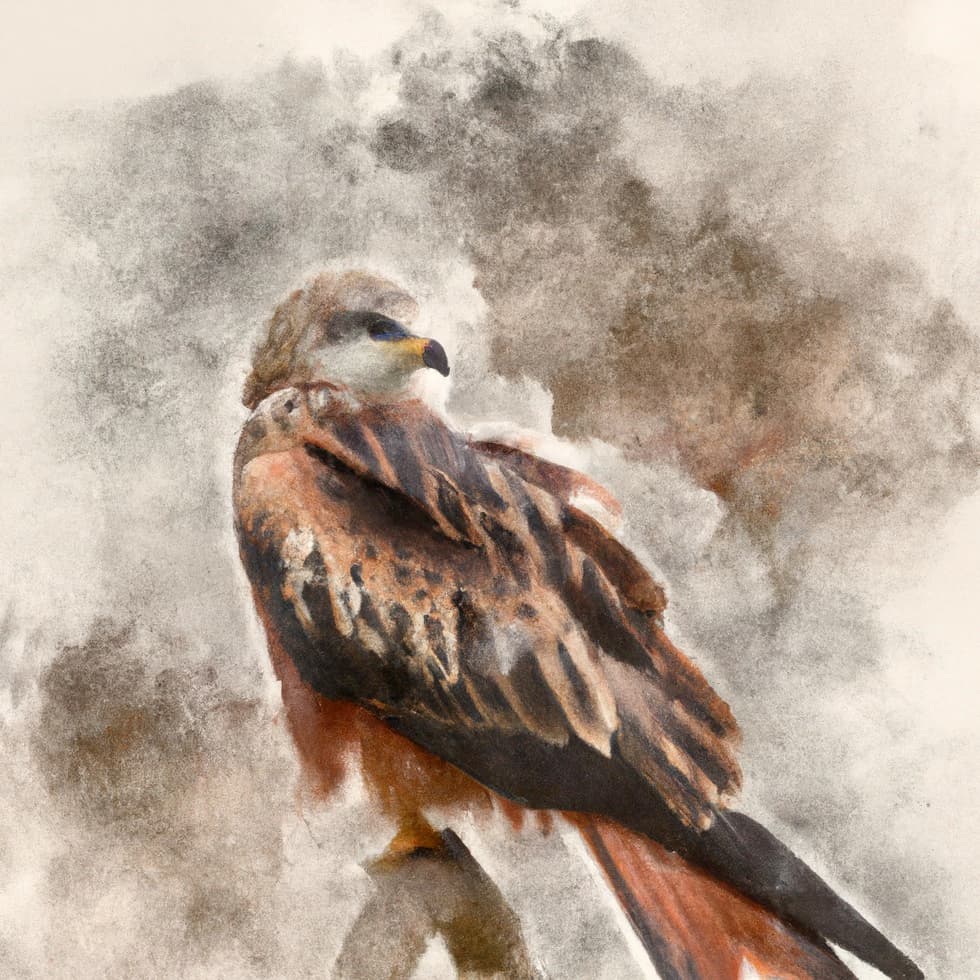
The Red Kite is a magnificent bird of prey that is known for its striking appearance, graceful flight, and important role in the ecosystem. In this blog, we’ll take a closer look at 27 curious facts about the Red Kite and discover why this remarkable bird is such a beloved and treasured species.
27 Curious Facts about the Red Kite
- The Red Kite is a medium-sized bird of prey that is native to Europe and parts of Asia and Africa.
- They are known for their striking plumage, which includes reddish-brown feathers on the body and distinctive forked tails.
- Red Kites are opportunistic feeders and will eat a wide range of prey, including small mammals, birds, and insects.
- They are able to soar for hours on thermals, using their keen eyesight to spot prey on the ground.
- Red Kites are able to locate carrion by sight and smell and will often gather in large numbers around a food source.
- They are a long-lived species, with some individuals living for more than 25 years in the wild.
- Red Kites are known for their distinctive call, which is often described as a high-pitched and mewing sound.
- They are able to communicate with other members of their species using a range of vocalisations and body language.
- Red Kites have a unique digestive system that allows them to extract nutrients from tough animal bones.
- They play an important role in the ecosystem as predators and as scavengers, helping to maintain a healthy balance in the food chain.
- Red Kites have been used in literature and art for centuries as a symbol of freedom and power.
- They are able to recognise and respond to the calls of other birds and may use call to establish territories and attract mates.
- Red Kites are able to recover from significant declines in population and have rebounded in many areas due to conservation efforts.
- They have a graceful and majestic flight and are a joy to observe in their natural habitat.
- Red Kites are popular among birdwatchers and nature lovers, and their striking appearance continues to capture the imagination of people around the world.
- They are able to adapt to a wide range of environmental conditions and are able to survive in areas with limited resources.
- Red Kites are a beloved species among birdwatchers and nature lovers, and their unique characteristics continue to inspire wonder and curiosity.
- They are able to recover from significant declines in population and have rebounded in many areas due to conservation efforts.
- The recovery of Red Kites in many areas is a testament to the power of conservation and the importance of protecting our natural world.
- The Red Kite is a remarkable and treasured species that has captured the hearts and minds of people around the world.
- With their distinctive appearance, majestic flight, and important role in the ecosystem, Red Kites truly are a treasure of the bird world.
- Red Kites are often seen in rural areas, where they can be observed soaring on thermals and scanning the ground for prey.
- They are also known for their distinctive forked tail, which helps them to manoeuvre in flight and catch prey.
- Red Kites are vulnerable to predation by a wide range of animals, including other birds of prey and ground predators.
- They are able to breed throughout much of the year and will often produce multiple broods in a single year.
- Red Kites are a symbol of hope and resilience and serve as a reminder of the power of conservation to protect our natural world.
- With their remarkable characteristics and important role in the ecosystem, Red Kites are a species that is worth observing and protecting for future generations.
Where to Find the Red Kite
Red Kites are native to Europe and parts of Asia and Africa and are often found in rural areas, where they can be observed soaring on thermals and scanning the ground for prey. They are able to adapt to a wide range of environmental conditions and can be found in a variety of habitats, including farmland, woodland, and grassland.
Feeding the Red Kite
Red Kites are opportunistic feeders and will eat a wide range of prey, including small mammals, birds, and insects. They are also known to scavenge carrion, and will often gather in large numbers around a food source. In some areas, Red Kites have become accustomed to feeding on discarded food in urban areas, and have been known to scavenge in landfill sites.
Final Thoughts
The Red Kite is a remarkable and treasured species that has captured the hearts and minds of people around the world. With their striking appearance, graceful flight, and important role in the ecosystem, Red Kites are a true treasure of the bird world. Whether you are a seasoned birder or simply appreciate the natural world, the Red Kite is a species that is worth seeking out. So why not take a moment to observe these amazing birds in their natural habitat, and perhaps even support their conservation through local conservation efforts? With their important role in the ecosystem and their remarkable characteristics, Red Kites truly are a symbol of hope and resilience, reminding us of the power of conservation to protect our natural world for generations to come.